Cheomseongdae “Star-Gazing Tower” Is The Oldest Observatory In East Asia
A. Sutherland - AncientPages.com - The Cheomseongdae Observatory located in Gyeongju, South Korea originates from the flourishing Silla period. Constructed in 632, the Cheomseongdae (“star-gazing tower” or “star-observing terrace”) is the oldest astronomical observatory in East Asia.
Cheomseongdae Observatory at night. source
It is a stone cylindrical-shaped structure composed of 362 granite blocks that represent the 362 days of the lunar year.
It is a symbol of early astronomy and the Southern observatory of the European astronomers working in Chile is called – Silla.
The structure - located near to the royal tomb of King Naemul of Silla - was built during the reign of Queen Sondok, the 27th ruler of the old Silla Kingdom in 634 AD. Queen Sondok (Seon-deok) was one of the first legitimate female rulers in East Asia’s history.
The observatory has twenty-seven levels of granite organized to resemble brick support the upper layers of stone that form the top platform. The granite stones are all concentrated in a round shape with four sets of parallel bars. So arranged, they form a square-shaped structure at the top. The granite brick construction is similar to the method used at Bunhwangsa temple, which developed from contact with Tang dynasty China.
Constructed in 634, Bunhwangsa (Famous Emperor Temple) is the oldest pagoda dated to the Silla Era. Once, the pagoda had seven or nine stories, but the upper stories have been lost over the years.
The pavilion stone is believed to have been used as a standard of deciding directions, north, south, east, and west.
Left: Model of the interior of Cheomseongdae; source: Right: Cheomseongdae Observatory, source
The ends of the parallel bars stick out several inches from the surface. Today it is not exactly known their purpose, but they might have been a support for a staircase inside the observatory. The twelve rectangular base stones are placed in a square, three on each side.
They represent the four seasons and twelve months of each year. The Vernal Equinox, Autumnal Equinox, Winter Solstice, Summer Solstice, and the 24 solar terms (the astronomical solar year) were determined by the observation of stars.
The purpose of the observatory was to observe the stars in order to forecast the weather.
The twelve tiers of stones to the window entrance and twelve tiers above the window opening also most probably symbolize the twelve months of the year. The observatory is 9.17 meters high and the base stone on each side measures 5.35 meters. Approximately, 4.16 meters up from the bottom, there is a one square meter entrance and a space to hang a ladder under it.
The inside is filled with soil up to the 12th level. The 19th, 20th, 25th, and 26th levels all have long rocks hanging on two areas, shaped as the Chinese letter ‘井’ (jeong). However, they could also represent the twelve symbols of the zodiac.
The Cheomseongdae observatory reflects a Chinese calendar with symbolic bricks. The bricks represent the days of the year, but parts also show the years of Queen Sondok’s reign.
Cheomseongdae has now its original appearance for about 1300 years since its construction in the 7th century. The structure is now slightly tilted to the north-east but the original shape is mostly intact. However, the instruments used for observation and observatory records have not been passed down, so the exact methods of taking observations are not known today.
Written by – A. Sutherland - AncientPages.com Senior Staff Writer
Copyright © AncientPages.com All rights reserved. This material may not be published, broadcast, rewritten or redistributed in whole or part without the express written permission of AncientPages.com
Expand for referencesMore From Ancient Pages
-
 Long-Lost Ancient Burial Mounds Of The Havana Hopewell Culture Re-Discovered In Iowa
Archaeology | Apr 6, 2021
Long-Lost Ancient Burial Mounds Of The Havana Hopewell Culture Re-Discovered In Iowa
Archaeology | Apr 6, 2021 -
 Bronze Age Royal Tombs Unearthed In Ruins Of Ancient City Of Pylos, Greece
Archaeology | Dec 30, 2019
Bronze Age Royal Tombs Unearthed In Ruins Of Ancient City Of Pylos, Greece
Archaeology | Dec 30, 2019 -
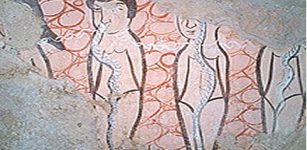 Ancient Monastery In The Middle Of ‘Syria’s Stonehenge’ – Underground Caves, Tombs, Stone Circles Older Than Pyramids
Civilizations | Nov 13, 2015
Ancient Monastery In The Middle Of ‘Syria’s Stonehenge’ – Underground Caves, Tombs, Stone Circles Older Than Pyramids
Civilizations | Nov 13, 2015 -
 Mysterious Lost Civilization Of Chu And Its Powerful Kingdom
Civilizations | Nov 29, 2018
Mysterious Lost Civilization Of Chu And Its Powerful Kingdom
Civilizations | Nov 29, 2018 -
 Sami People: Facts And History About The Only Indigenous People Of Most Northern Europe
Featured Stories | Sep 25, 2016
Sami People: Facts And History About The Only Indigenous People Of Most Northern Europe
Featured Stories | Sep 25, 2016 -
 Three Unusual Celestial Journeys And The Chosen Ones Initiated Into The Secrets Of The Gods
Ancient Mysteries | Jul 26, 2021
Three Unusual Celestial Journeys And The Chosen Ones Initiated Into The Secrets Of The Gods
Ancient Mysteries | Jul 26, 2021 -
 Khufu Boat And Unique Boat-Building Technique Of Ancient Egyptians
Artifacts | Jun 20, 2017
Khufu Boat And Unique Boat-Building Technique Of Ancient Egyptians
Artifacts | Jun 20, 2017 -
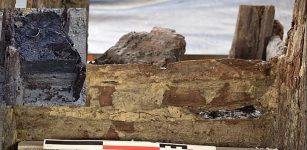 Czech Neolithic Well Is Oldest Wooden Structure In The World
Archaeology | Mar 11, 2020
Czech Neolithic Well Is Oldest Wooden Structure In The World
Archaeology | Mar 11, 2020 -
 Controversial Tunnel Plan Near Stonehenge Gets U.K. Government Approval – Shocked And Angry Opponents Will Challenge The Decision In High Court
News | Nov 13, 2020
Controversial Tunnel Plan Near Stonehenge Gets U.K. Government Approval – Shocked And Angry Opponents Will Challenge The Decision In High Court
News | Nov 13, 2020 -
 600-Year-Old Axe Heads Used In The Battle Of Grunwald Found in Poland
Archaeology | Sep 1, 2020
600-Year-Old Axe Heads Used In The Battle Of Grunwald Found in Poland
Archaeology | Sep 1, 2020 -
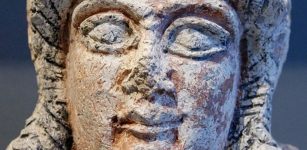 Ancient Mesopotamian City Discovered And Identified As Xarab-i Kilashin
Archaeology | Jul 11, 2017
Ancient Mesopotamian City Discovered And Identified As Xarab-i Kilashin
Archaeology | Jul 11, 2017 -
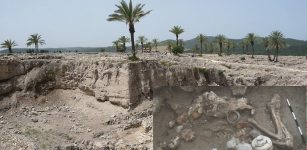 Evidence Of Brain Surgery Performed 3,000 Years Ago Discovered In Tel Megiddo, Israel
Archaeology | Feb 23, 2023
Evidence Of Brain Surgery Performed 3,000 Years Ago Discovered In Tel Megiddo, Israel
Archaeology | Feb 23, 2023 -
 Why Was Alexander A Great Military Genius?
Ancient History Facts | Oct 23, 2018
Why Was Alexander A Great Military Genius?
Ancient History Facts | Oct 23, 2018 -
 Viking Cemetery In Lutomiersk And DNA May Solve The Mystery Of Norse Warriors In Central Poland
Vikings | Jan 7, 2025
Viking Cemetery In Lutomiersk And DNA May Solve The Mystery Of Norse Warriors In Central Poland
Vikings | Jan 7, 2025 -
 Archaeologists Will Excavate Unique Ancient Roman Obelisk Near Lesicheri, Bulgaria
Archaeology | Apr 8, 2016
Archaeologists Will Excavate Unique Ancient Roman Obelisk Near Lesicheri, Bulgaria
Archaeology | Apr 8, 2016 -
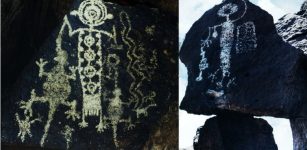 Mysterious Coso Petroglyphs In California – Made By Whom And For What Reason?
Featured Stories | Dec 31, 2020
Mysterious Coso Petroglyphs In California – Made By Whom And For What Reason?
Featured Stories | Dec 31, 2020 -
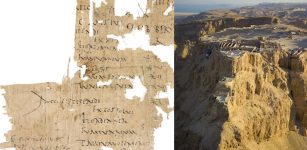 Rare Ancient Paycheck Of A Roman Legionary Soldier Found At Masada
Archaeology | Feb 16, 2023
Rare Ancient Paycheck Of A Roman Legionary Soldier Found At Masada
Archaeology | Feb 16, 2023 -
 What Was Life For Ancient Viking Children?
Ancient History Facts | Nov 1, 2016
What Was Life For Ancient Viking Children?
Ancient History Facts | Nov 1, 2016 -
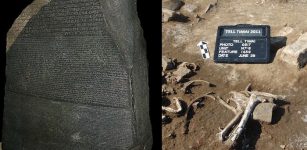 Archaeologists Dug For Evidence Of The Rosetta Stone’s Ancient Egyptian Rebellion – Here’s What They Found
Archaeology | Mar 7, 2023
Archaeologists Dug For Evidence Of The Rosetta Stone’s Ancient Egyptian Rebellion – Here’s What They Found
Archaeology | Mar 7, 2023 -
 Why Did People Start Eating Egyptian Mummies? The Weird And Wild Ways Mummy Fever Swept Through Europe
Featured Stories | Jun 7, 2022
Why Did People Start Eating Egyptian Mummies? The Weird And Wild Ways Mummy Fever Swept Through Europe
Featured Stories | Jun 7, 2022


